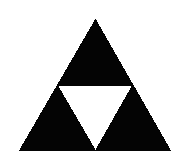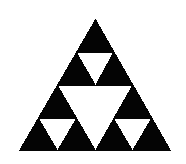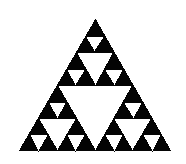Each problem is worth 10 points. Be sure to show all work and justifications
for full credit. Please circle all answers and keep your work as legible
as possible. No animals were used in the making of this exam.
1. Find the limit of the sequence ![]() ,
giving justifications for important steps in your reasoning.
,
giving justifications for important steps in your reasoning.
2. Find the first four partial sums of the series ![]() .
.
s1 =
s2 =
s3 =
s4 =
3. Give an example of a sequence an which converges, but
for which ![]() diverges.
diverges.
4. Find the sum of the series ![]()
5. Determine whether the series  converges or diverges.
converges or diverges.
6. Use the Ratio Test to show whether the series ![]() converges or diverges.
converges or diverges.
7. Determine whether the series ![]() converges or diverges.
converges or diverges.
8. Ken is a calculus student from California, and he's gotten a little confused. Ken says "Wow, I skipped my calc class a few times, and now when I started going back it's totally whacked! Man, the prof is talking about finding out what it adds up to when you, like, add these things together, and there's infinitely many of these things that we're supposed to add up. Isn't that completely whacked? I mean, if you add infinitely many things you gotta automatically get infinity, right?"
Explain briefly and clearly to Ken how we can talk about
the sum of infinitely many things and how the sum need not always be infinite.
Just naming theorems to him probably won't help -- you need to actually
get the idea across to him.
9. Consider the series ![]() which continues with terms of the form 1/n with signs alternating in pairs.
What can you say about the convergence or divergence of this series?
which continues with terms of the form 1/n with signs alternating in pairs.
What can you say about the convergence or divergence of this series?
10. Begin with an equilateral triangle with a total area of 1 and successively remove smaller triangles from it in the manner shown below:



(a) If an is the total area removed in step n alone, find a1, a2, a3, and a4.
a1 =
a2 =
a3 =
a4 =
(b) If we continue the process indefinitely, express the total area
removed as a series and find the sum of that series.
Extra Credit (5 points possible):
[1 pt.] Give an example of a sequence {an} which converges to 6.
[2 pts.] Give an example of sequences {an} and {bn} such that {an + bn} converges to 6.
[2 pts.] Give an example of divergent sequences {an} and {bn} such that {an + bn} converges to 6.